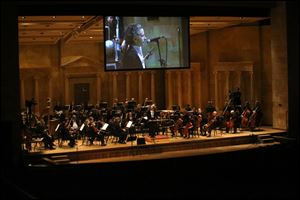
EDITORIAL
Art is good for Toledo
12/24/2017

The Toledo Symphony is an artistic gem that makes Toledo a good place to live.
The final roundtable discussion hosted by Mayor-elect Wade Kapszukiewicz focused on fostering arts and culture in Toledo, which Mr. Kapszukiewicz said promises not only to improve quality of life for residents but also to lead to economic growth.
“Art is not something that makes you feel good and enriches our lives. It is actually something that helps grow our economy. We have to think about it in those terms also,” he said.
RELATED: Mayor-elect's roundtable discusses quality of life in Toledo
It remains to be seen if or how Mr. Kapszukiewicz will deliver on his stated goal of promoting the arts in Toledo, but he is right to make it a priority. There is a wealth of research to support the idea that local government investment in the arts produces economic benefits for both taxpayer and artist.
Examples as far afield as present-day Pittsburgh and 19th century Paris show that encouraging artists to beautify the urban landscape in both physical and cultural terms is one of the best investments local governments can make. Pittsburgh’s move from quintessential rust belt city to the top ranks of “most livable cities” lists was catalyzed in large measure by the city’s successful use of the cultural arts as a tool of redevelopment. Furthermore, art can sustain a city through long periods of economic decline; as long as Paris remains as beautiful a place as it is, people will want to visit and even move for no other reason than its sheer splendor.
Arts and cultural economic activity accounted for 4.2 percent of U.S. gross domestic product, or $729.6 billion in 2014, the latest date for which data is available from the Bureau of Economic Analysis, growing by roughly 2 percent annually. Yet in the same year, the arts and culture sector of the economy employed only 4.7 million people, just 0.03 percent of America’s roughly 150 million-strong labor force. The gap exists because artistic production tends to create work in related industries. Screenwriters, for example, are core arts employees, but they also generate the need for marketers, computer programmers, camera manufacturers, along with workers in numerous other industries.
Click here to view more Blade editorials
Talented humans are who ultimately drive economic growth, and the greater a city’s quality of life, the more likely talent is to congregate there. Toledo’s cultural assets — the Toledo Museum of Art, the Toledo Symphony, the Toledo Zoo, Toledo Metroparks, and others — are on par or superior to their peers in much larger, wealthier communities. We should not only be proud of this robust arts heritage, we should seek to promote, cultivate, and add new chapters to it.